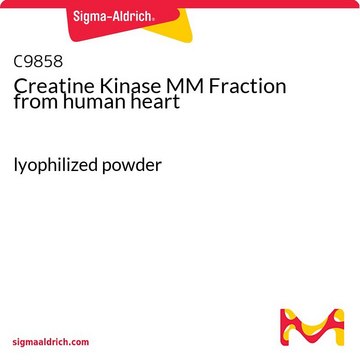D5891
1,1-Dimethyl-4-phenylpiperazinium iodide
≥98% (TLC or titration)
Sinônimo(s):
DMPP
About This Item
Produtos recomendados
Ensaio
≥98% (TLC or titration)
Formulário
powder
pf
234-238 °C (lit.)
solubilidade
H2O: 21 mg/mL
temperatura de armazenamento
−20°C
cadeia de caracteres SMILES
[I-].C[N+]1(C)CCN(CC1)c2ccccc2
InChI
1S/C12H19N2.HI/c1-14(2)10-8-13(9-11-14)12-6-4-3-5-7-12;/h3-7H,8-11H2,1-2H3;1H/q+1;/p-1
chave InChI
XFZJGFIKQCCLGK-UHFFFAOYSA-M
Informações sobre genes
human ... CHRNA1(1134) , CHRNA10(57053) , CHRNA2(1135) , CHRNA3(1136) , CHRNA4(1137) , CHRNA5(1138) , CHRNA6(8973) , CHRNA7(1139) , CHRNA9(55584) , CHRNB1(1140) , CHRNB2(1141) , CHRNB3(1142) , CHRNB4(1143)
rat ... Chrna2(170945) , Chrna3(25101) , Chrna4(25590) , Chrnb2(54239) , Chrnb4(25103)
Procurando produtos similares? Visita Guia de comparação de produtos
Categorias relacionadas
Aplicação
- to study the roles of α7 and α4β2 nAchRs in autonomic regulation of cardiovascular responses in urethane-anesthetized mice
- to study the mechanism involved in improving glucose tolerance in diet-induced obese (DIO) mice treated with DMPP
- to study its pharmacological effect on enteric viscerofugal neurons in the myenteric plexus of guinea-pig colon
Ações bioquímicas/fisiológicas
Características e benefícios
Código de classe de armazenamento
11 - Combustible Solids
Classe de risco de água (WGK)
WGK 3
Ponto de fulgor (°F)
Not applicable
Ponto de fulgor (°C)
Not applicable
Equipamento de proteção individual
dust mask type N95 (US), Eyeshields, Gloves
Escolha uma das versões mais recentes:
Já possui este produto?
Encontre a documentação dos produtos que você adquiriu recentemente na biblioteca de documentos.
Nossa equipe de cientistas tem experiência em todas as áreas de pesquisa, incluindo Life Sciences, ciência de materiais, síntese química, cromatografia, química analítica e muitas outras.
Entre em contato com a assistência técnica







